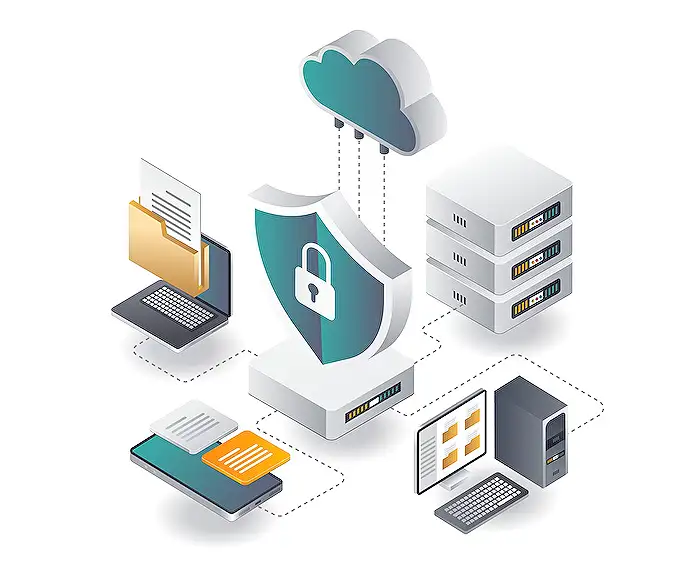Microsoft Fabric vs Power BI: Org Apps
Microsoft Fabric vs Power BI Workspace Apps: expert look at sharing, org apps and architecture for seamless content
Key insights
- Platform scope: Microsoft Fabric is an integrated, enterprise-grade data platform that includes Power BI as its visualization workload.
Power BI alone focuses on interactive reports and dashboards for business users. - Workloads and storage: Fabric combines multiple Workloads (data engineering, warehousing, real-time analytics, data science, Data Activator and Power BI) under one environment.
It uses a unified storage layer called OneLake to reduce data duplication and simplify governance. - Target users: Use Microsoft Fabric when you need end-to-end pipelines, large-scale data handling, and centralized governance for enterprise teams.
Use standalone Power BI for fast, self-service analytics and team-level reporting without heavy engineering. - Integration and performance: Fabric offers native integration across Microsoft cloud services and supports AI/ML at scale for heavy workloads.
Power BI supports many connectors and performs best for interactive scenarios using imported data or DirectQuery models. - Sharing and apps: Fabric enables workspace designs that combine multiple workloads into organizational apps for governed delivery to users.
Traditional Power BI Apps (workspace apps) package reports and dashboards for sharing with business audiences. - Licensing and migration: Fabric uses a consumption-based pricing approach and usually needs more technical setup than standalone Power BI.
Plan migrations for governance, cost monitoring, and staff training to get the expected operational benefits.
Video overview and context
In a recent YouTube video, Reza Rad (RADACAD) [MVP] compares how organizations can share analytics content using Microsoft Fabric and Power BI. He frames the discussion around the new sharing model in Fabric, sometimes called Org Apps, and contrasts it with the familiar Workspace Apps approach in Power BI. Consequently, the video aims to help architects and teams choose the right pattern when designing enterprise analytics solutions.
Reza emphasizes that Microsoft Fabric is not simply a replacement for Power BI, but a broader platform that includes it as a workload. Therefore, the comparisons focus on scope, governance, and practical tradeoffs rather than declaring a clear winner. As a result, viewers can expect a balanced assessment that highlights both technical and organizational implications.
Core technical differences explained
First, Reza highlights that Microsoft Fabric provides a unified environment with multiple workloads such as data engineering, warehousing, real-time analytics, data science, and the visual layer of Power BI. He points out that OneLake centralizes storage and avoids data duplication, which can simplify architecture and improve performance for large-scale solutions. Moreover, Fabric’s integrated approach supports advanced AI and end-to-end pipelines that go beyond the traditional scope of standalone BI tools.
In contrast, Reza explains that Power BI remains optimized for the last mile of analytics—creating interactive dashboards and sharing insights with business users. He notes that Power BI offers many connectors and flexible data modeling for self-service scenarios, which is still advantageous for teams that do not need full-scale data engineering. Nevertheless, the differences matter most when organizations need to manage massive data volumes or implement complex governance and processing pipelines.
Collaboration and app models
The video discusses how sharing mechanisms differ: Workspace Apps in Power BI focus on deploying reports and dashboards to groups of users, while Fabric’s Org Apps enable organizations to package multi-workload solutions under common governance. Reza suggests that Fabric apps can include engineered data pipelines, governed datasets, and visualizations together, which helps maintain consistency across teams. Consequently, Fabric makes it easier to deliver end-to-end solutions that productionize data work alongside the reporting layer.
However, he cautions that this integration introduces complexity for teams that previously relied on lightweight, self-service Power BI deployments. In particular, Fabric’s broader model requires tighter coordination between data engineers and BI developers, and it may demand new skills and processes. Therefore, organizations must weigh the benefits of consolidated governance against the overhead of a more formalized delivery model.
Licensing, cost, and operational tradeoffs
Reza outlines how pricing models represent an important tradeoff when moving toward Fabric. He explains that Fabric uses a consumption-based model aimed at large, varied workloads, whereas Power BI historically centered on per-user licensing for reporting and sharing. As a result, cost predictability and total cost of ownership can shift depending on data volume, query patterns, and how teams design pipelines.
Accordingly, he recommends that organizations perform careful cost modeling before adopting Fabric broadly. He also warns that migration can be technically demanding: converting existing Power BI solutions to a Fabric-centric architecture might require rethinking dataflows, storage, and query strategies. Thus, the decision to migrate should consider immediate needs, long-term scale goals, and the staffing required to manage a more integrated platform.
Governance, challenges, and practical advice
The video stresses governance as a central challenge and opportunity. Reza notes that Fabric’s unified control plane and OneLake can simplify policy enforcement, lineage, and security across workloads, which benefits large enterprises with strict compliance needs. Nevertheless, implementing consistent governance requires organizational change, because teams must adopt shared conventions and new operational practices.
Finally, Reza offers practical guidance: start with use cases that clearly need Fabric’s strengths, keep self-service scenarios on Power BI where appropriate, and pilot a hybrid approach that balances autonomy and control. In doing so, organizations can manage migration risk while learning how to align engineering, analytics, and business teams. Ultimately, the video makes a measured case that Fabric complements rather than replaces Power BI, and that the right choice depends on scale, skills, and governance priorities.

Keywords
Microsoft Fabric vs Power BI comparison, Microsoft Fabric org apps, Power BI organizational apps, migrate Power BI to Fabric, Fabric app workspaces vs Power BI workspaces, governance for Fabric org apps, Power BI vs Fabric pricing and licensing, best practices for Microsoft Fabric org apps
